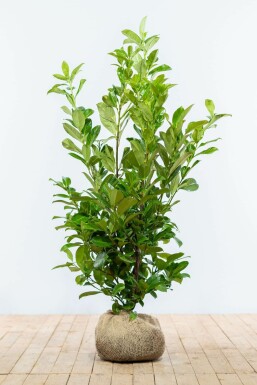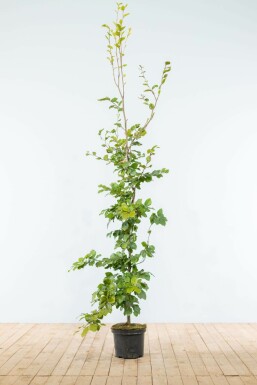Best Hedge Plants For Hedges And Screens
Best Hedge Plants For Hedges And Screens
Blog Article
Hedging Plants For Attracting Birds
Boost your garden's appeal with rich hedge varieties such as Yew (Taxus), Thuja, Laurel, Photinia, and Bamboo, celebrated for their structural stability and environmental advantages.
Yew and Thuja provide evergreen protection and winter strength, while Laurel offers fast development and broad, fragrant leaves.
Photinia includes seasonal charm with its lively red foliage, and Bamboo lends a low-maintenance, peaceful atmosphere.
These hedges improve air quality, minimize sound, and produce tranquil, private areas.
Correct planting, spacing, and maintenance guarantee energetic growth and environmental consistency.
Explore how these rich ranges can raise your garden's beauty and well-being.
Secret Takeaways
Transform Your Garden With Lush Hedge Varieties
- Select Yew for its thick, evergreen growth and unequaled longevity.
- Choose Laurel for its fast development and broad leaves, guaranteeing fast privacy.
- Choose Photinia for its dynamic seasonal foliage, which turns a striking dark red.
- Make use of Bamboo for a low-maintenance, winter-hardy hedge with aesthetic appeal.
- Space plants 2-3 per meter and prune routinely for optimum development and health.
Popular Hedge Plants
When transforming a garden with rich hedge ranges, it's vital to think about popular hedge plants such as Yew, Thuja, Laurel, and Photinia due to their distinct qualities and advantages.
Yew (Taxus) is highly esteemed for its durability and thick, green growth, making it a prime choice for sustaining landscapes.
Thuja is kept in mind for its evergreen foliage and robust winter season durability.
Photinia adds seasonal vibrancy with red leaves that darken gradually, creating dynamic visual appeal.
Laurel uses quick growth and fragrant, broad leaves, perfect for fast privacy.
Additionally, Bamboo is an outstanding choice for ambiance, providing a low-maintenance, winter-hardy choice that improves the garden's aesthetic with its elegant, swaying walking canes.
These choices accommodate a variety of horticultural requirements and choices.
Benefits of Garden Hedges
Garden hedges offer a multitude of advantages, making them an important addition to any landscape. These natural barriers are affordable to implement and supply considerable wind defense, improving air circulation and adding to noise decrease. The dense foliage of hedges like Thuja and Beech makes sure privacy by blocking visibility, developing a peaceful and remote environment.
Hedges also play a vital role in microclimate policy, supplying a steady environment that promotes plant development and reduces temperature level changes. Their detailed leaf structures filter contaminants, enhancing air quality and contributing to a healthier garden ecosystem.
Furthermore, hedges master noise reduction, taking in and deflecting acoustic waves to lower ambient noise levels. This double performance of providing both acoustic and visual privacy improves the total harmony and aesthetic appeal of any garden.
Planting and Maintenance Tips
For an effective hedge, careful preparation of the planting location is crucial. Ensure the soil has appropriate pH and drainage to support strong root development.
Area the plants properly for the picked types. Water the hedge often during its initial growth phase, changing as required with seasonal modifications.
Implement a systematic insect control and disease prevention technique, utilizing organic or chemical treatments when required. Routinely examine for aphids, mites, and fungal infections.
Apply mulch to keep moisture and suppress weeds. Seasonal pruning promotes dense development and air blood circulation, necessary for plant health.
Following these standards will assist you cultivate a dynamic, well-kept hedge that improves the charm of your garden.
Spacing and Trimming Guidelines
Spacing and Cutting Standards
Correct spacing and cutting are vital for cultivating healthy, aesthetically appealing hedges. Sufficient spacing ensures each plant gets enough nutrients, light, and airflow.
Follow these guidelines for optimum hedge upkeep:
- Spacing: Position hedge plants 2-3 plants per meter to encourage robust development.
- Pruning Strategies: Routine pruning is essential for maintaining preferred hedge height and shape. Cut brand-new growth in summer and cut back older wood during winter season.
- Seasonal Care: Change cutting techniques and schedules according to seasonal requirements to guarantee plant health.
- Hedge Height: Routinely screen and trim to maintain the wanted hedge height and attain consistent looks.
Following these steps will ensure your hedge flourishes, enhancing both the appeal and performance of your garden.
Selecting the Right Hedge
Choosing the Right Hedge
Picking the proper hedge involves evaluating aspects such as mature height, foliage density, and environmental strength. Effective hedge plant selection needs comprehending each types' growth attributes and site-specific versatility.
For example, Yew (Taxus) provides excellent durability and dense growth, while Thuja is notable for its winter season strength. Furthermore, thinking about maintenance requirements is crucial; fast-growing types like Laurel or Privet demand routine trimming, whereas low-maintenance choices like Bamboo or Ivy might be preferable for those looking for very little maintenance.
Environmental elements such as soil type, light availability, and moisture conditions need to also direct the choice process. This mindful method makes sure the chosen hedges will prosper, providing both visual and practical advantages to the garden landscape.
Delivery and Planting Suggestions
To ensure your hedge plants prosper, they must be provided by specialized couriers and planted without delay upon arrival.
Follow these essential steps for effective planting:
- Soil Preparation: Improve the soil with organic matter to improve drain and nutrient material.
- Planting Depth: Develop a trench twice the width and equivalent to the depth of the root ball.
- Watering Techniques: Water thoroughly after planting, keeping the soil regularly wet however not filled.
- Mulching: Apply a layer of mulch to keep moisture and reduce weeds.
Consumer Support and Service
Given the essential function of prompt support in horticultural pursuits, our consumer assistance group is available six days a week through telephone, email, and social media to provide professional suggestions and promptly address any concerns. Their dedication to quick response times ensures consumer complete satisfaction by dealing with inquiries associated with plant health, ideal planting techniques, and upkeep schedules.

Communication Technique
Within 24 hours
This thorough support group, reinforced by an outstanding 9.3/ 10 client score, highlights our dedication to boosting the gardening experience for every single customer.
Frequently Asked Questions
For How Long Does It Consider Hedge Plants to Develop?
Hedge plants usually need one to 3 years to end up being totally developed, with the specific period differing by types and growing conditions.
Reliable care throughout this vital duration is vital for robust development. Consistent watering, watchful weed control, and appropriate fertilizer application are pivotal in promoting strong root development.
For example, fast-growing types like Laurel might develop quicker, while slower-growing varieties such as Yew might take longer. Diligent upkeep speeds up the establishment process, resulting in healthy and thick hedges.
What Are the Best Hedge Plants for Privacy?
The question of the finest hedge plants for personal privacy involves evaluating evergreen and deciduous options.
Evergreen hedges like Thuja, Laurel, and Cypress supply year-round protection, guaranteeing continuous personal privacy.
On the other hand, deciduous hedges such as Beech offer seasonal privacy, shedding leaves in cooler months.
Key maintenance pointers for personal privacy hedges include routine trimming, fertilizing in spring, and proper spacing-- normally 2 to 3 plants per meter.
Furthermore, consistent watering and thorough weed elimination are crucial for promoting healthy, thick growth.
Can Hedge Plants Bring In Wildlife to My Garden?
Yes, hedge plants can bring in wildlife to your garden by offering important benefits like shelter, food, and nesting websites, thus boosting local biodiversity. Yew, holly, and laurel are excellent for drawing in birds, while ivy supports a range of bugs.
Nevertheless, it's essential to note that there are some downsides, such as increased maintenance to handle pests and routine upkeep. Carefully picking and maintaining hedge ranges can help balance these disadvantages and advantages, ultimately promoting a lively and sustainable environment in your garden.
Exist Any Flowering Hedge Plants Available?
Yes, there are flowering hedge plants offered that can boost the beauty of your garden.
For instance, Elaeagnus, also known as Olive Willow, produces fragrant white flowers in the fall, including a touch of elegance.
Photinia, another popular option, showcases lively red leaves that mature into a rich green, developing a vibrant visual effect throughout the seasons.
To guarantee these plants prosper, it's essential to practice proper pruning methods and seasonal upkeep, such as cutting brand-new development in the summer and cutting back in the winter.
These steps will assist keep the health and visual appeal of your blooming hedges.
How Do I Prevent Pests in My Hedge Plants?
To prevent pests in hedge plants, employ natural insect control techniques and preserve proper hedge care. Present useful pests like ladybugs, which victimize damaging bugs, to develop a well balanced environment.
Frequently check your hedges for indications of problem and promptly remove any affected parts to prevent the spread. Make sure the health of your hedges by using well balanced fertilizers and offering sufficient water.
Use mulching to retain soil moisture and correct spacing to lower plant tension and promote robust growth. These practices collectively help in decreasing bug problems and preserving a healthy hedge.
Conclusion
In essence, choosing the ideal hedge ranges such as Yew, Thuja, and Laurel can transform any garden into a tranquil sanctuary. These plants supply year-round greenery, enhance visual appeal, and offer practical advantages like noise reduction and wind defense.
Appropriate planting techniques, precise spacing, consistent watering, and seasonal trimming are crucial for ideal growth.
Reliable shipment services and expert consumer support ensure a smooth experience from purchase to planting, making it simpler than ever to raise your outdoor area.
Garden hedges offer a plethora here of benefits, making them a valuable addition to any landscape. These natural barriers are economical to implement and supply significant wind defense, enhancing air blood circulation and contributing to noise decrease. The dense foliage of hedges like Thuja and Beech guarantees personal privacy by obstructing presence, creating a tranquil and secluded environment.

Pruning Strategies: Routine pruning is important for maintaining wanted hedge height and shape. Cut new development in summer season and cut back older wood during winter season.
Report this page